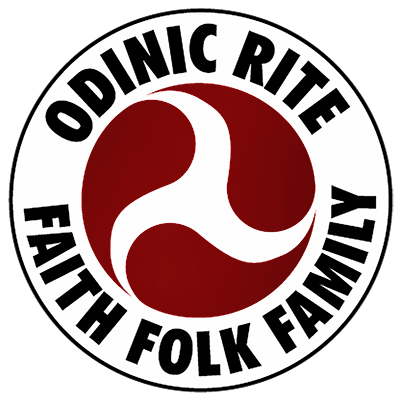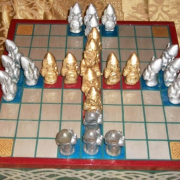Yggdrasil – The Tree of Life and Death
The Gods and Goddesses of Odinism
Copyright © 1996 The Circle of Ostara
Published with the kind permission of the Circle of Ostara.
This article must not be republished or reprinted
in whole or in part without their express written permission.
The multiversal concept of Yggdrasil, the World Tree, has been touched on many times elsewhere. The material presented here is a drawing together of these threads, weaving them into a composite picture.
The “World Tree” (see map in The Norse Myths by Kevin Crossley-Holland) is a mythological diagram, a means of raising into consciousness an awareness of the multiversal aspect of reality. It depicts the “worlds” as existing in separate territories, yet being at the same time part of a greater whole. There is a drawback in this representation, however, for we who have been educated in the schools of materialism, in the environment of the “great city”. To us such a diagram conveys little real information. We see the “territories” of Asgarth, Midgarth and Niflheim as being connected but separate. The natural images of trees, rivers, birds and animals have little relevance to our city lives.
For the student of magic it is essential to realise that these “other worlds” of the multiverse are not separate “territories”, as it were, although so represented in the old diagram, but different planes of being, actually co-existing with the “world” of Migdarth which is immediately apparent to our physical senses.
As our consciousness expands we begin to become aware of this greater reality which is all around us. We begin to “see” and “hear” sights and sounds which are not apparent to people whose senses are still asleep. Strange events occur, strange relationships between ourselves and what appear to be “unnatural” happenings in the ” natural” worlds. We begin to travel to other realms of being in dreams and trance states and to receive and accept the wisdom hidden in them. We begin to “climb” Yggdrasil, to ride the shaman’s horse, to travel between the worlds – a journey that is a shifting of consciousness, yet in a true sense a real journey to real places.
For us today there is a necessity to depict the multiverse in a way that is more accessible to twentieth century thought. We can envisage the multiverse of Yggdrasil as three interpenetrating spheres occupying the same space, yet each possessing a “basic” atomic structure that vibrates at a different rate from the others. Our physical bodies vibrate at the “material” frequency, along with the rest of Midgarth, yet we have the power to alter our spiritual, “astral” bodies so that through them we can perceieve and move in other worlds.
The boundaries of the other worlds of the multiverse are not hard and sharp divisions, like that between water and dry land. Rather they are gradual and nebulous, each world imperceptibly impinging on the others, an impingement that fluctuates and changes with the cycles of existence. So, in those years before the present Dark Age the most closely adjacent worlds to ours, Alfheim (Faery) and the “upper reaches” of Hel, were quite accessible to ordinary mortals. We have the ancient shamanic traditions which speak of long ago times when all could travel between the worlds, and much of the folklore of all races is taken up by stories of such journeys.
Parts of these other worlds are so close to Midgarth that it is possible by other-world magic, generated by other-world beings, to alter the vibrations of our physical bodies so that we can travel to them in the flesh. Stories of such occurences are well “documented”, not only in the old folklore of the fairy tale, but in their modern versions – “flying saucer abductions”, for instance. Each generation clothes its fairy tales with its own cultural trappings, yet they are expressions of the same underlying truth.

